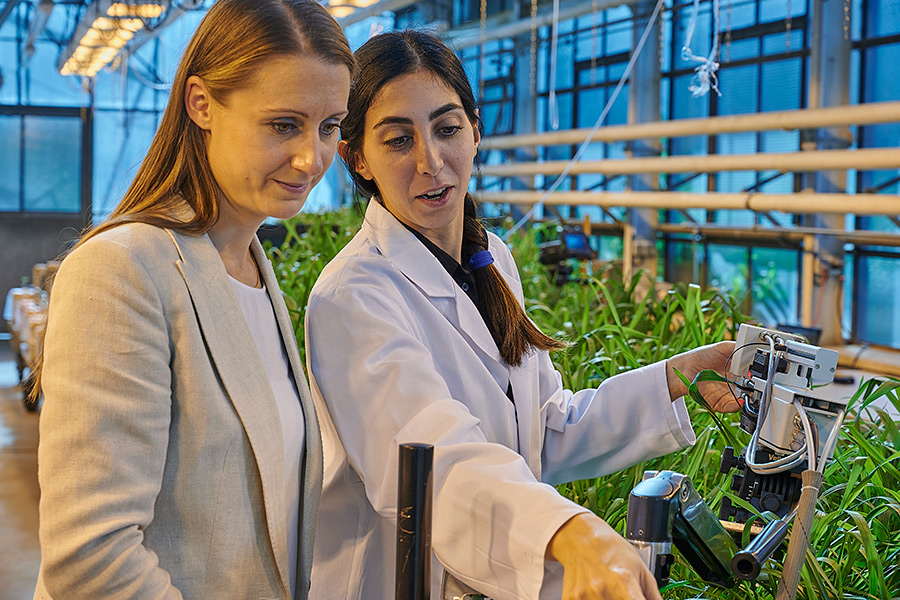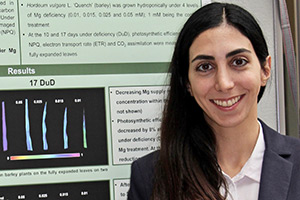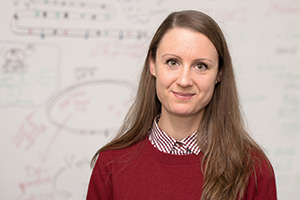News
- New publication of Setareh Jamali Jaghdani and Professor Dr. Merle Tränkner
 IAPN’s PhD student Setareh Jamali Jaghdani (right) demonstrates results of gas exchange measurements to her supervisor Professor Dr. Merle Tränkner. (Photo: K+S)
IAPN’s PhD student Setareh Jamali Jaghdani (right) demonstrates results of gas exchange measurements to her supervisor Professor Dr. Merle Tränkner. (Photo: K+S)
Setareh Jamali Jaghdani has published, jointly with Junior Professor Dr. Merle Tränkner, recent research results from her doctoral thesis. The article is entitled “Mg deficiency induces photo-oxidative stress primarily by limiting CO2 assimilation and not by limiting photosynthetic light utilization”.
The study focuses on the influence of magnesium (Mg) on photosynthetic processes and photoprotective mechanisms in barley plants. It demonstrates that Mg deficiency reduces significantly the carbon dioxide (CO2) assimilation while photosystem functionality measured by chlorophyll fluorescence is not affected substantially.
One mechanism that was investigated is non-photochemical quenching (NPQ). It serves as a light protection mechanism by converting excess light energy in the photosynthetic apparatus into harmless heat. However, the NPQ mechanism does not seem to play a role for the plants’ defense against light stress under Mg deficiency, since it was not increased.
Tightly connected to NPQ is the violaxanthin cycle where the carotenoid violaxanthin (Vx) is converted into the intermediate antheraxanthin (Ax), which in turn stimulates the formation of zeaxanthin (Zx). These three pigments form what is known as the VAZ pool. Zx is suggested to be an important component of NPQ. In contrast to NPQ, the size of the VAZ pool increased, which reflects a high photoprotective demand under Mg deficiency. However, this increase of the VAZ-pool size seems to be an NPQ-independent photoprotective function.
In line with these results is the occurrence of photo-oxidative stress under Mg deficiency which was shown by enhanced gene expression levels of enzymes involved in reactive oxygen species (ROS) scavenging.
The obtained results can contribute to an understanding of how Mg nutrition affects photosynthetic efficiency and protection against excess radiation and thus, can contribute to improving productivity.
The study was co-authored by Professor Dr. Peter Jahns of the Institute of Plant Biochemistry at the Heinrich Heine University Düsseldorf. It was published in the peer reviewed journal Plant Science.






